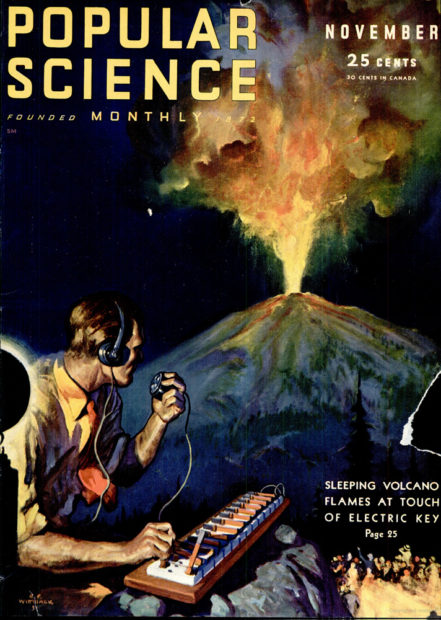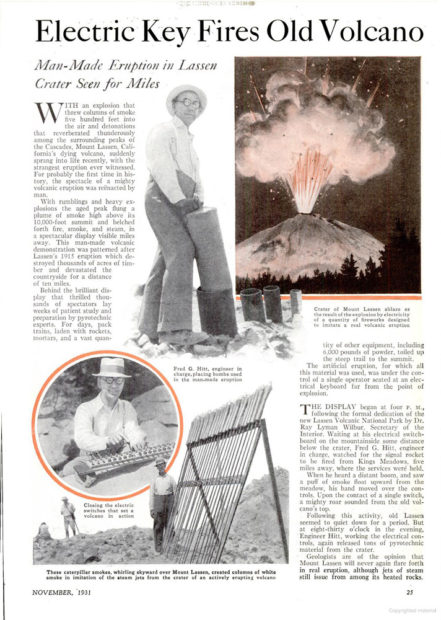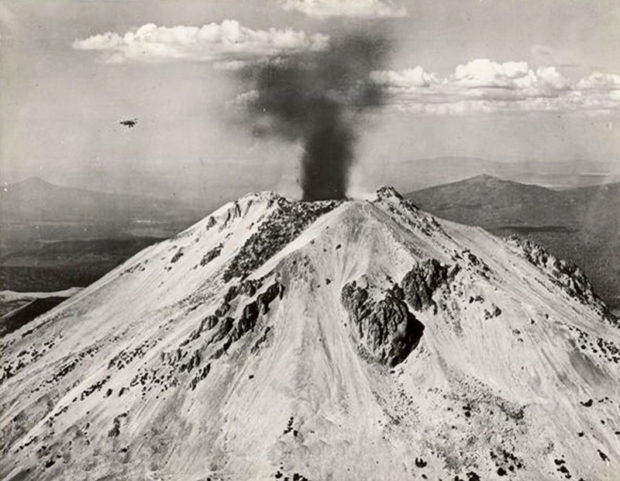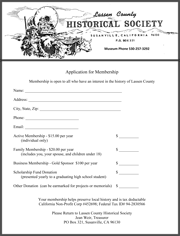

by Susan Couso
Around 600,000 years ago, the 11,000-foot-tall ancient volcano named Mt. Tehama pushed its way skyward. It rumbled and spewed and lorded over the entire area until it blew itself up in a mighty explosion about 350,000 years ago and collapsed into the earth.
Then, about 27,000 years ago the little mound-shaped dacite lava dome, which we call Mt. Lassen today, began to swell and grow through Tehama’s former north-eastern side, showing that the earth is never still for long.
Through the years the vegetation grew, lakes formed, and the crystal-clear creeks brought life to the region. It was a beautiful place. Even as the weary emigrants passed through the area, they were amazed at the beauty.
In 1821, Spanish explorer Luis Arguello spied the 10,451-foot-tall peak and named it St. Jose. It then became Mount St. Joseph. When Peter Lassen, Danish emigrant, and pioneer, made a name for himself by leading emigrants through the rugged terrain, the peak was called Lassen’s Peak in his honor.
In 1912 and again in 1913, John Edward Raker, local attorney who was elected to the U.S. House of Representatives, introduced a bill to create Peter Lassen National Park. Neither of these bills stood a chance. Very few people had ever heard of Peter Lassen, and far fewer people had ever visited the area.
So, it sat, beautiful and undisturbed, enjoyed by very few who witnessed its staggering beauty.
Then, on May 30, 1914, Lassen Peak emitted a rumble and an explosion of steam. After 27,000 years, it was awake! Between May of 1914 and May of 1915, there were 180 steam explosions, and a 1,000-foot-wide crater was formed at the top of the peak.
On May 19, 1915, things got even more serious. A new explosion expanded the crater and blocks of glowing lava fell onto the mountain side. The heat from the lava blocks melted the snow and created a mudflow that devastated the surrounding area, and lava filled the crater and spilled over onto low places on the west and northeast sides of the mountain.
On May 22, 1915, an even more forceful explosion sent ash 30,000 miles into the sky and 200 miles away in Winnemucca, Nevada. Along with the ash, pumice rock fragments were shot high into the air. A high-speed avalanche of hot ash, rock fragments and gas swept down the mountainside, destroying everything in its path. The heat from this new flow melted snow and caused massive flooding.
Smaller eruptions continued until 1917, and Lassen Peak became the southernmost active volcano in the Cascade Range and part of the Earth’s Ring of Fire.
The excitement and fascination with a volcanic eruption in California brought renewed interest to Congressman Raker’s wishes to create Peter Lassen National Park. He reintroduced his bill in 1915, and this time it passed.
President Woodrow Wilson signed the bill in August of 1916, and the new, almost 80,000-acre Lassen Volcanic National Park was a reality.
L. W. Collins was the first superintendent of the new park. He was an enthusiastic proponent of the area and insured that many improvements were made to please park visitors.
When a new highway to the area was created in 1931, including a scenic loop through the park, Collins decided to hold a huge celebration to dedicate his then 15-year-old baby. The extravaganza would hopefully attract people to the magnificence of Lassen National Park and highlight the amazing force of a volcano, and to see nature ‘first-hand’.
As part of the three-day celebration, July 24th through 26th, Collins decided to create a faux eruption. This faux eruption would be spurred by tons of explosives and viewed up to 80 miles away. It would be spectacular! Motion pictures would record the event for posterity and the world would be in awe.
The dedication would take place at King’s Creek Meadow, a beautiful place, with the peak looming nearby. As the dignitaries finished their speeches, a signal would be sent to the top of the peak, and the explosives would do the rest.
At about 3:00 P.M., on July 25th, a plume of smoke would be seen spiraling into the sky, and then, at about 9:00 P.M. an explosion of fire would create the Faux eruption.

Not everyone was pleased with this idea. Dr. R. H. Finch, a volcanologist who was stationed at the park and who lived on the side of the mountain, was aghast. They were tampering with nature! He complained that they were using the volcano as a plaything.
Local Native People simply shook their heads in disbelief at the thought of meddling with something as powerful as the earth.
The 50,000 pieces of explosives (at a cost of $15,000) were under the control of engineer Fred G. Hitt. On July 25th, the speakers and onlookers gathered in place at King’s Creek Meadow to view the awesome event.
Congressman Raker, the park’s creator, had died in 1926, but his widow, Iva Spencer Raker attended the dedication, along with many others. The 5,000 expected attendees may have been a bit of an overestimation, but there was still a huge crowd.
At 3:00 P.M., the signal went off and the pyrotechnic experts did their job. Unfortunately, the plume of smoke was blown away from the crowd by a stiff wind, and the celebrants had no view of it. But they did hear the small ‘boom’ of the explosives.
Later that evening, the major event took place. The thousands of pounds of explosives, controlled by Fred Hitt and his crew, exploded on schedule. The massive blast was described as being nothing like an eruption and caused little excitement. It was somewhat of a ‘fizzle’, but still a good show on a dark night in July.
So, Lassen Volcanic National Park was created in 1916 and dedicated in 1931, and today remains one of the most beautiful and pristine and unvisited National Parks in our country.


If you are a fan of our weekly history stories you should join the Lassen County Historical Society! It’s a fun way to be a part of our county’s rich history. When you sign up, you’ll receive regular Historical Society newsletters with interesting stories and information. Membership is open to anyone with an interest in area history.
Through your membership you help preserve local history. You can download a membership application by clicking here.







